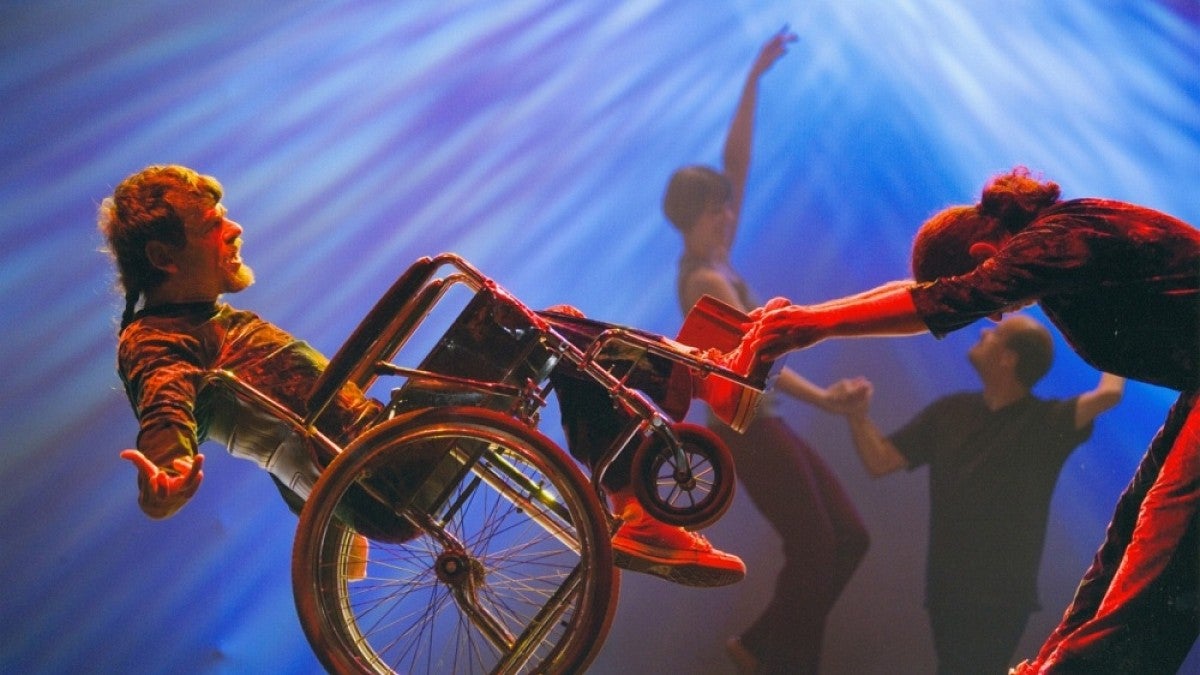In a world where performance and perfection are often perceived as the norm, Bach in Motion, a project featuring traditional dancers from the UO and mixed-ability dancers from DanceAbility International, offers a counterpoint.
Bach in Motion will perform July 5 for an evening of music, movement and awareness at this year’s Oregon Bach Festival.
The dancers will be accompanied by several world-class soloists, the Oregon Bach Festival Orchestra, the UO Chamber Choir and acclaimed conductor Jane Glover. For this special performance, instrumentalist, conductor and researcher Koji Otsuki has arranged a Bach pastiche, excerpts from the composer’s works that have been reworked to be told through the lens of dance.
“Bach in Motion breaks the idea of performance and perfection expectations,” said Oregon Bach Festival Executive Director Janelle McCoy. “We do have preconceived notions, but that’s what is so beautiful about this program. It questions what one would consider to be the norm or what those biases are or what we’ve been taught, and it seeks to include everyone, allowing people to express themselves and move.”
Inspired by a 2017 Mobility International USA exhibition at the Jordan Schnitzer Museum of Art acknowledging the accomplishments of women with a melange of disabilities, McCoy envisioned a project that could be aligned within the strategic framework of student enrollment, faculty research, and equity and inclusivity outlined by UO President Michael H. Schill.
And notably, the Oregon Bach Festival recently received a $25,000 Art Works grant from the National Endowment for the Arts with additional funding support from the Oregon Cultural Trust and the UO Division of Equity and Inclusion.
“It’s a remarkable program that allows the community to come together, benefits faculty research and lends itself to student experience,” she said.
The scope of the project will not only bring diversity to the stage but also fund teachers seeking certification in the DanceAbility method. Pioneered by DanceAbility International founder Alito Alessi, who has been working closely with the UO Department of Dance, the method is rooted in improvisation strategies designed to offer people with mixed abilities opportunities to express themselves freely through creative movement.
“Alito shows that even when you have what we perceive as barriers to being a dancer that does not mean that you can’t participate,” McCoy said. “If we lift those barriers, a person of mixed ability can be just as expressive as anyone else. It’s also a learning process for the professional dancer.”
Associate professor of dance Shannon Mockli, whom the festival sponsored to obtain certification, has spent the past few months introducing the DanceAbility methodology to her dance students. Working with community members and programs like disability studies on campus, Mockli’s dance class incorporates the broader concepts behind working with people with disabilities. From that class, she selected several dance major students to be part of the Bach in Motion project.
“This was a wonderful opportunity for these students to start thinking about inclusion in a dance class,” Mockli said. “There is a fear of working with mixed-ability individuals. It’s intimidating. You don’t want to get it wrong. But the method offers you tangible strategies; the method does not focus on disability, rather, on eliminating isolation and that which separates us.”
Later this summer, the UO Department of Dance will host a DanceAbility teacher certification for people who want to teach integrated groups in dance, improvisation, and movement arts or learn a model for facilitating communities that fosters inclusive participation. According to McCoy, close to 700 instructors already have been certified in the method.
“People from all over will come here to learn this methodology and be certified in it and identify Eugene as being a place of inclusivity,” she said.
—By Sharleen Nelson, University Communications


